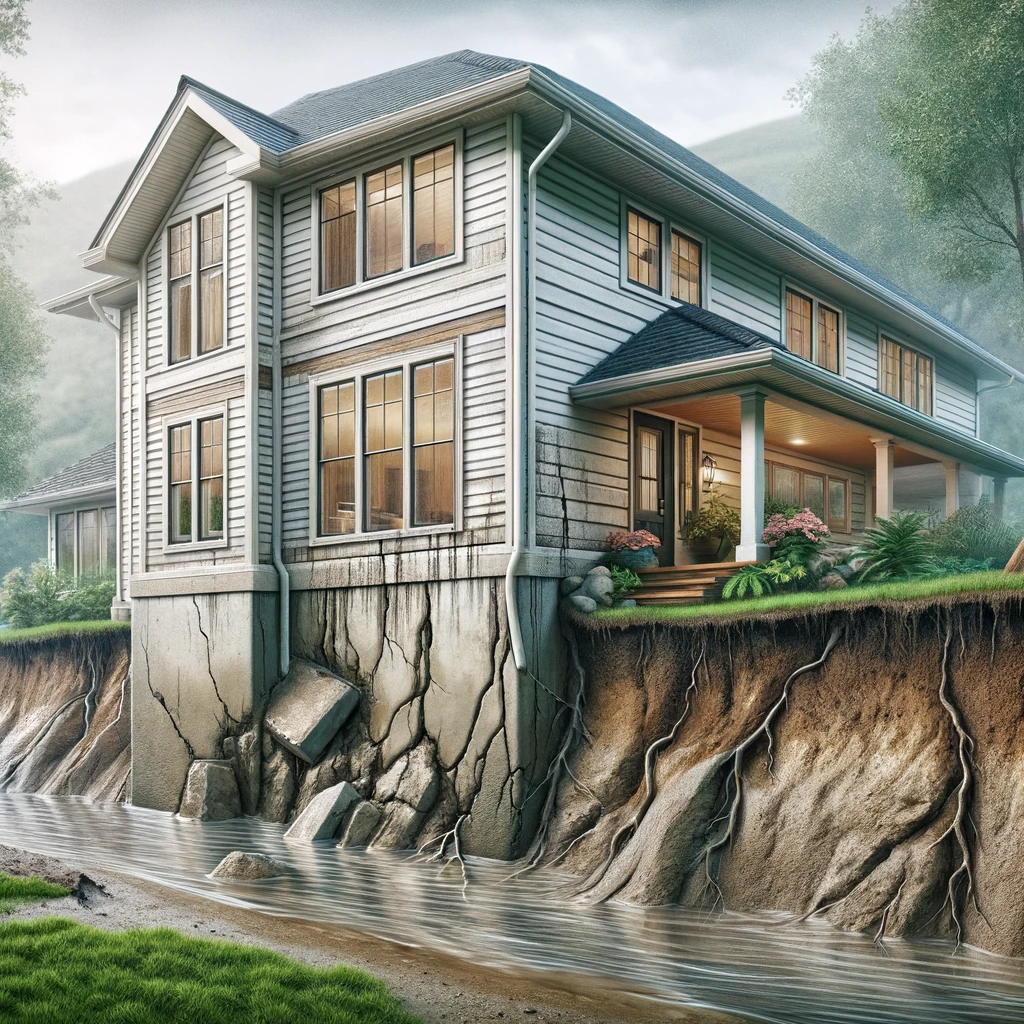Foundation water damage is a growing problem for many homeowners. It can cause serious structural damage to the home and can result in expensive repair costs. This article will explore the causes and signs of foundation water damage, as well as helpful tips to prevent potential problems with this issue.
What Is Water Seepage?
Water seepage is the process by which water enters a building’s foundation. This can occur through cracks, joints, and other openings in the foundation walls or floor. Water seepage typically happens when there is not enough of a barrier between the soil and the foundation, allowing water to easily move through the porous material of the foundation wall. It can also occur due to hydrostatic pressure or if rainwater has nowhere else to go, so it gets absorbed into crawlspaces and basements.
Can water damage the concrete foundation?
Water seepage can have a significant impact on your home’s foundation. Over time, the water will erode the material of the foundation walls, resulting in structural damage and weakening of the entire building’s foundation.
This is because water is a natural solvent and will slowly break down whatever it comes into contact with. For example, if water seepage is occurring through a crack in your foundation wall, the water will slowly widen the crack as it dissolves the material around it.
Furthermore, if water is constantly seeping into your basement or crawl space, it can cause mold growth and excess moisture condensation which can aggravate breathing difficulties for people with allergies or asthma.
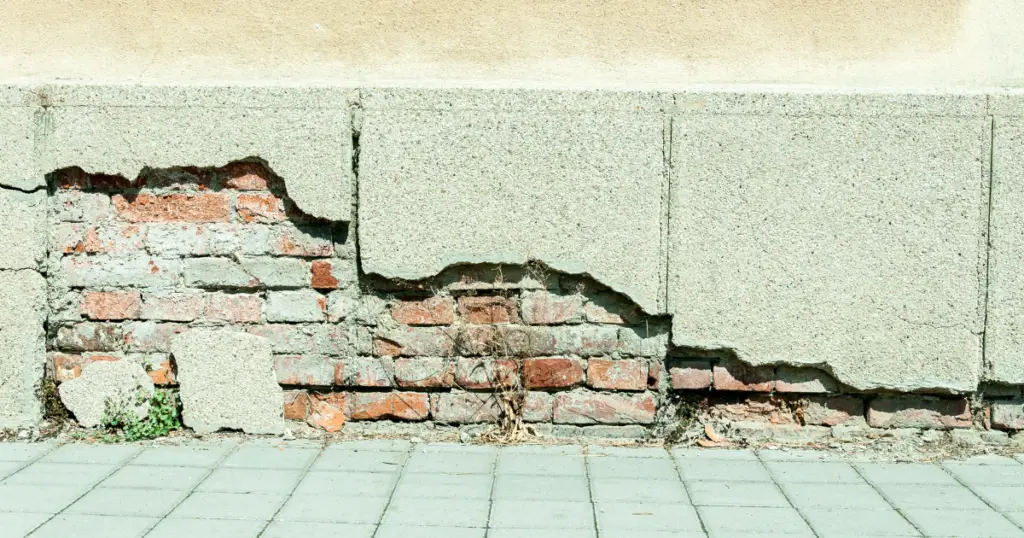
What Should You Do immediately if You Find Water Damage?
If you find water damage in your home, it’s important to take immediate action to mitigate the damage and prevent foundation problems and further deterioration. Here’s a detailed checklist of what you should do:
- Find the source of the water damage and stop it if possible.
- Call your insurance and take pictures of the damage – this can help you with any potential claims.
- Turn off power and water to prevent any further damage.
- Remove any standing water from the affected area with a wet vacuum or pump if it is safe to do so.
- Remove all damaged furniture, rugs, and other items from the area.
- Use fans and dehumidifiers to dry out the affected area as much as possible.
- Clean and disinfect all wet materials, including carpets, furniture, and clothing.
- Open windows and doors to allow for air circulation.
- Monitor the affected area for signs of mold or mildew growth.
- Call a professional water damage restoration company if the damage is extensive or if you are not confident in your ability to safely and effectively clean and repair the affected area yourself.
- Take steps to prevent future water seepage issues by repairing damaged gutters to the area of the water damage.
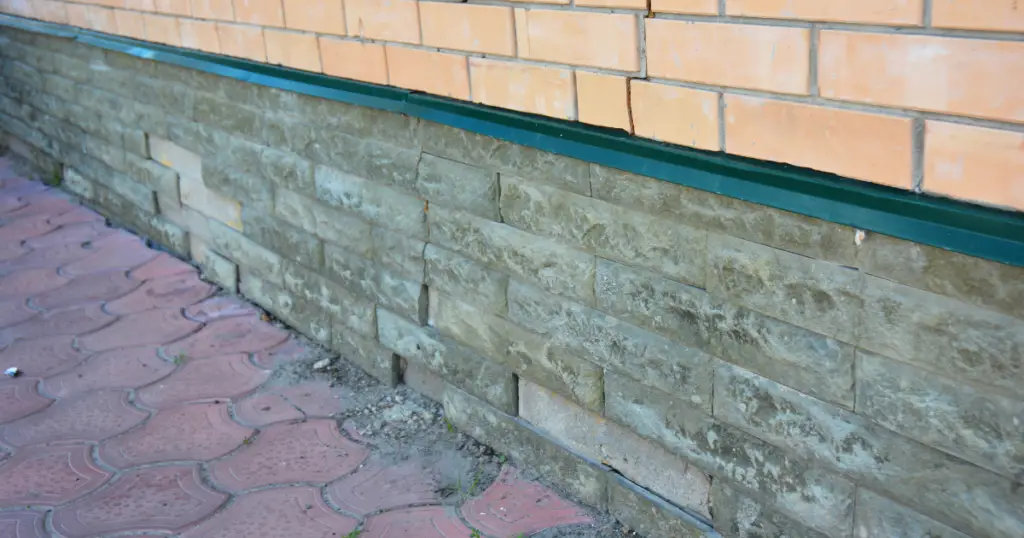
What are the first signs of water damage?
There are several signs of water damage that you should watch out for, especially in areas around your foundation or basement. The first sign of water damage is usually the appearance of moisture, either visible on the walls and ceiling or below the surface. Other telltale signs of water damage include:
Foundation Cracks
Vertical and horizontal cracks in concrete foundations walls and floors are indications of water damage as well as movement in the structure due to extreme weather conditions or other factors. Horizontal cracks are particularly serious and often indicate structural damage in the foundation.
Concrete slabs are especially prone to shifting when exposed to moisture because they lack footings that provide stability below grade level as well as reinforcement bars running vertically between layers of concrete for added strength against movement from expansive soils beneath them. When exposed to moisture from poor drainage systems or excessive rain these slabs typically experience cracking due to reduced stability caused by forces working against them from both above and below ground levels.
Uneven Floor
Uneven Floors can be obvious signs of water damage. If you notice that your basement floor is sagging, uneven, or soft to the touch, it could be an indication that there is water damage in the subflooring or joists.
Water Stains
Water stains on walls and ceilings are another common sign of water damage. These stains can be
Basement Walls
Warping, buckling, or bulging walls can indicate that there has been water intrusion from outside sources such as a leaking pipe or flooding rainwater.
Leaning walls are also a sign of water damage as the hydrostatic pressure from the saturated soil outside can cause the walls to lean or crack.
Door Sinking
If doors do not close correctly and if you notice gaps around them, this could indicate that the foundation is shifting due to moisture in the soil around it.
Musty Odors
If you notice an odd or musty smell in your basement, it could indicate that there is water damage and/or mold growth.
Mold or Mildew Growth
Mold and mildew growth is a sure sign of excessive moisture, which can be caused by water seepage into the walls and floors of your home. Be sure to keep an eye out for dark patches on basement walls, and wet spots on floors.
Lawn and Landscaping
Check for any discoloration or patchy areas on lawns or landscaped areas which could be caused by underground water leaks or drainage issues near your home’s foundation. Rainwater can dissolve the soil around your home and under the foundation, leading to soil erosion and expansion.
Erosion is when rainwater washes away the protective soil surrounding the foundation, causing it to sink or settle into the ground. As the soil erodes, this in turn affects the concrete foundation which creates instability in your walls and could lead to further damage.
These warning signs should not be ignored as they can indicate underlying foundation issues which could lead to further problems if not addressed promptly. It is important to keep an eye out for any of these indicators and contact a professional if you suspect water damage or foundation issues in your home.
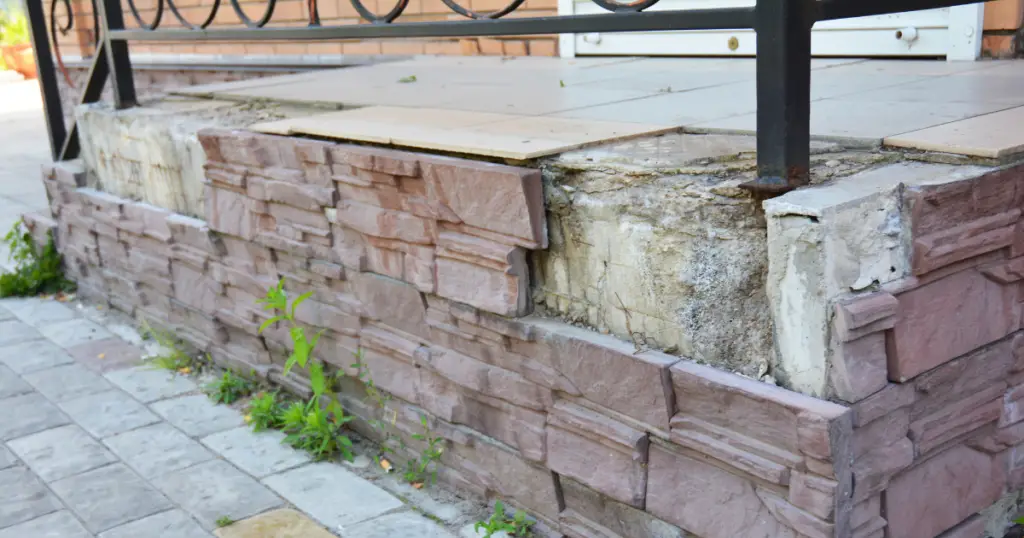
What causes foundation damage?
Causes of water damaged Foundation, include:
- Surface Water: Surface water can cause foundation damage when it seeps into cracks in the foundation and saturates the soil. This saturation can lead to a rise in pressure that can cause the soil to expand and put stress on the structure’s foundation walls. Over time this expansion can cause cracks in the walls or even a shift of the entire structure.
- Poor Drainage: Poor drainage is another common cause of foundation damage. Poorly designed sites with inadequate drainage systems mean that large amounts of standing water can pool around a home’s foundation. This excess moisture can soak into the ground underneath and saturate the soil creating pressure that can shift or settle a home’s foundation over time.
- Underground Water: Underground water also contributes to foundation damage by eroding underlying soils over time. The erosion weakens the soil’s ability to support structural weight and causes it to gradually shift or settle creating cracks or other structural issues with a home’s foundation walls.
- Trees: Trees are another contributor to foundations settling or cracking over time because their roots often grow under foundations causing them to lift out of place due to the added weight and pressure from above-ground growth. Structures built near trees may experience more frequent settlement issues caused by tree root growth over time than those without nearby trees.
- Excess Water: Excess water from melting snow or other sources that saturates a home’s foundation due to improper drainage or low site grading may also lead to shifting foundations over time as saturation weakens underlying soils and causes instability in structures sitting atop them.
How long does it take for water to damage the foundation?
How long it takes for water to impact a foundation depends on the volume of water, soil composition, and drainage system in place. If left unchecked, additional problems can arise with prolonged exposure to excess moisture or inadequate draining procedures exacerbating erosion and weakening structural integrity over time. Fortunately, foundations made from brick and stone are more resilient against water damage than those constructed using concrete or wood materials.
If there is too much water present around the foundation, it can start to erode the soil underneath the foundation and cause cracks in the walls or floors. This type of damage can become severe if left unchecked, as it weakens structural support and can eventually lead to collapse.
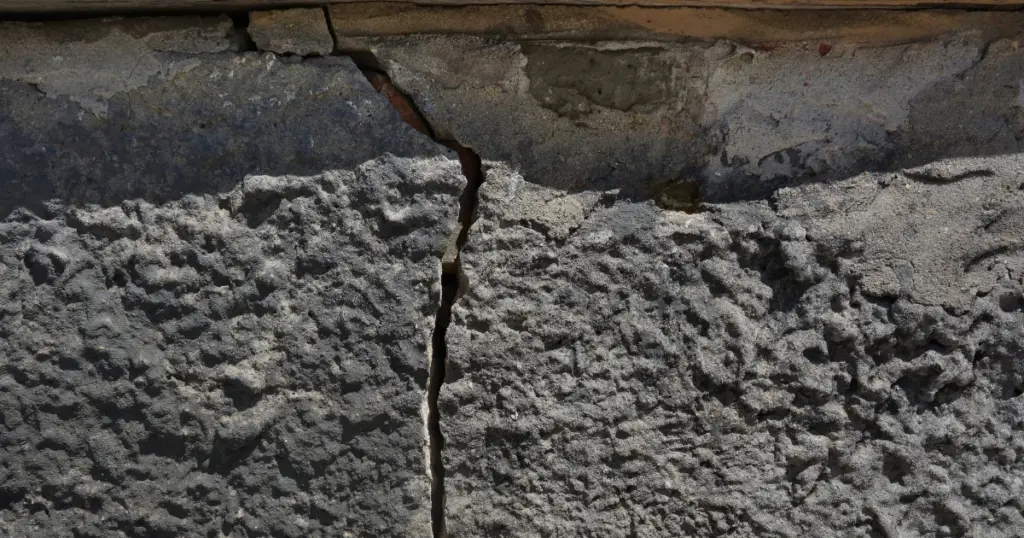
How to prevent water damage from damaging your home’s foundation?
Water damage can be a serious problem for any home, especially if it affects the foundation of your house. Here are some tips on how to avoid water damage and keep your home safe:
- Install proper drainage systems around your home’s foundation to ensure that any excess water is directed away from the structure. This includes making sure that gutters and downspouts are functioning properly, as well as ensuring there is a proper slope away from the foundation. Build a gradual slope away from the foundation. You might want the look of a nice flat yard, but a yard should slope away from your house so that water drains away from the foundation.
- Remove excess moisture from around your home’s foundation to avoid any water build-up near the walls or floor. This includes making sure that gutters and downspouts are functioning properly, as well as ensuring there is a proper grade away from the foundation.
- Install a sump pump in your basement if needed, which will help remove water from that area before it can cause any damage to the foundation walls or floor.
- Inspect your basement walls and check for any cracks or other weaknesses that may allow water to seep into the home. If found, have them patched up and sealed with hydraulic cement or a similar waterproofing compound, such as Portland cement.
- Check the concrete slab that supports your home’s foundation every once in a while to make sure it is stable and not sinking or shifting due to ground movement or poor soil conditions. If necessary, this should be reinforced with additional concrete underlayment or steel rebar reinforcement bars.
- Make sure that all plumbing lines leading into your basement are properly insulated and caulked where appropriate to avoid any leakage issues. Additionally, install backflow prevention devices so that you can stop water from entering your home if plumbing problems arise outside of it.
- Regularly inspect the basement wall and windows for signs of water infiltration and fix any sealant failures immediately before they become more costly problems later on down the line.
Finally, always keep an eye out for increased humidity levels in your basement as this could indicate a potential problem below ground level which should be addressed with professional help before it worsens further. By taking these steps, you can help protect your home’s foundation from potentially costly and damaging water damage.
Call a Professional
Fixing sinking or shifting foundation can be a difficult task, which is why it is important to hire a foundation repair professional. Foundations are the most important part of any building, and even minor damage can lead to severe problems if not addressed quickly.
Professional intervention is often necessary when dealing with a water damaged foundation or a sinking foundation due to shifting soil. Foundation repairs should always be left to experienced and trained professionals such as foundation repair experts or foundation repair professionals. These experts have the knowledge and experience necessary to properly assess the problem and provide top-notch solutions that will ensure your home’s structural integrity for years to come.
[/et_pb_text][/et_pb_column][/et_pb_row][/et_pb_section]
